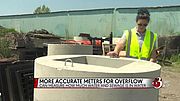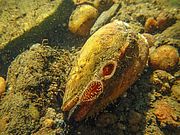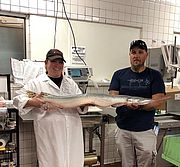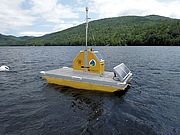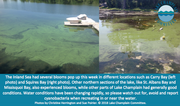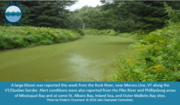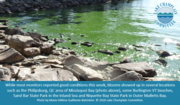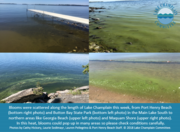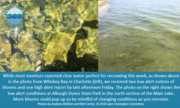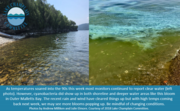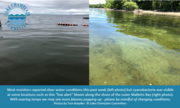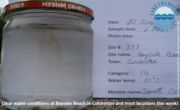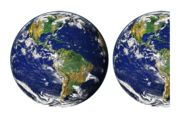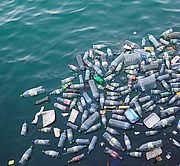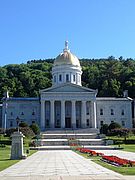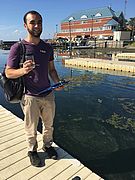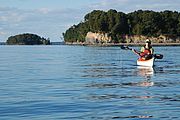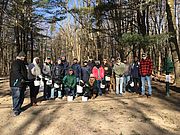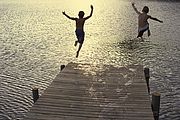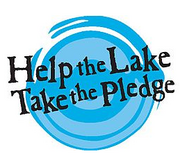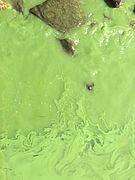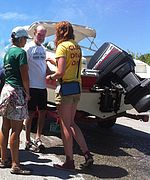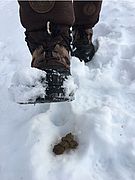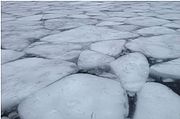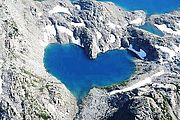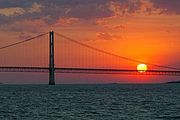WCAX TV - The city recently installed new meters in the combined-sewage overflow pipes. The meters will show not only how much water overflows but what percentage is sewage versus stormwater.
News from Selected Month
VPR - Here in Vermont there are eighteen separate species of freshwater mussels and of those, ten are listed as threatened or endangered while several others are considered rare.
NBC - On the waters of Lake Champlain, researchers are searching for clues. The goal is to better understand a rapid increase of the Lake Trout population after it inexplicably vanished in the early 1900's.
The Buffalo News - Another fish record has been broken. This time it’s an impressive longnose gar that weighed in at 14.85 pounds by Mike Gatus of Hoosick Falls.
Seven Days - Founded in 2013, the Jefferson Project is turning Lake George into what it calls "the world's smartest lake," with the goal of better understanding, protecting and sustaining this crown jewel of the Adirondack region. The multimillion-dollar collaboration was named for Thomas Jefferson, who visited Lake George in 1791 and described it in a letter to his daughter as "without question, the most beautiful water I ever saw."
Clear water was generally reported this week from most sections of Lake Champlain, with the exception of several alert level conditions observed by monitors in northern sections of the lake like the Inland Sea, St. Albans Bay and Missisquoi Bay. Conditions have been changing daily at some locations, so please keep a watchful eye and use the links and resources in this email to learn <link lcc-at-work algae-in-lake>ways to recognize and <link get-involved volunteers cyanobacteriamonitors cyanobacteria-monitor-reporting-form>report on cyanobacteria. Read...
While good conditions were primarily reported this week, blooms popped up in many sections of the lake and at some inland lakes. As of late afternoon Friday (8/17/18) we received 120 reports from Lake Champlain and inland lake sites. Scroll down to see pictures of the filamentous green algae scums that were showing up in some areas of the lake. People often confuse decaying green algae with cyanobacteria. Read...
Yet another busy week of monitoring as alert level conditions were reported from several Lake Champlain locations and inland lakes. A large bloom was observed at the Rock River near Morses Line, Vermont on the VT/Quebec border and also in the Saxtons River Recreation Area in Rockingham, VT. There’s stagnant warm water in rivers across the region due to the lack of rain. Please spread the word that blooms aren’t restricted to lakes and ponds, they can be found in rivers as well.Read...
July was a hot, steamy month with blooms popping up in various places around the lake. (July was officially the hottest for Burlington VT since the National Weather Service began keeping records in 1892.) The high heat and sultry weather has continued into August, a time of year when cyanobacteria blooms are more common. Please enjoy the water but keep a careful watch for cyanobacteria. Read...
Another busy week that brought much needed rain. While most Lake Champlain Committee (LCC) monitors reported good conditions throughout the week, some blooms did show up on Lake Champlain but not at any of the inland lakes that reported this week.Additionally, on Friday morning (7/27) two Burlington, VT beaches (Blanchard at Oakledge Park and Leddy Beach) were closed due to E.coli from stormwater flows after recent heavy rains. Read...
Lake Champlain Committee (LCC) monitors were busy assessing conditions throughout the watershed during this hot, dry week. We received 139 reports from Lake Champlain and inland lake sites. Hot, still weather is ideal for cyanobacteria so please be mindful of changing conditions and keep a careful watch on the water. You’ll find further details of this week’s reports below. Read...
It’s been another hot week, but quiet in terms of cyanobacteria blooms all week until Friday afternoon. While most monitors reported conditions great for recreating throughout the week, we received a low alert bloom notice of cyanobacteria at Alburgh Dunes State Park in the North Main Lake mid-afternoon today and late in the day reports of low and high alert blooms at two sites in the Inland Sea. You’ll find further details of this week’s results below along with background information about LCC’s monitoring program. Read...
What a hot week of record-breaking temperatures! Lake Champlain Committee (LCC) monitors filed 140 reports for Lake Champlain and inland lakes. Most observed clear water, great for cooling off in during the heat wave. However, there were some sightings of cyanobacteria, mainly in Outer Malletts Bay and the Inland Sea on Lake Champlain and at some inland lakes. Happily most conditions improved by mid-week. Read...
It’s been a busy week for the Lake Champlain Committee Cyanobacteria Monitoring Program with over 130 reports from Lake Champlain and inland lakes! While most monitors observed clear water, perfect for cooling off in, we did receive some reports of cyanobacteria from Malletts Bay and several inland lakes. Read...
Thank you for signing up to receive the Lake Champlain Committee’s (LCC) summer cyanobacteria monitoring reports! Monitors reported in from more than 80 locations this past week, mainly noting clear water conditions great for recreating. While there were no reports of cyanobacteria for Lake Champlain locations and many inland lakes there was a cyanobacteria bloom observed in a feeder stream near Hall’s Bay in Lake St. Catherine in Poultney, Vermont.
How many planets does it take to support your lifestyle? Take a quiz from the Global Footprint Network to discover your biggest areas of resource consumption and learn what you can do to lighten your load on the planet. Click here to access the footprint calculator.
Read...Avoid single-use items like plastic bottles, coffee cups and lids, cutlery, bags, plastic wrap, products with microbeads and microplastics and “free” gifts you don’t need. Read...
Vermont Legislators are deliberating on many measures that affect the health and future of our waterways. Let them know you want them to take action to protect and improve water quality. Updates on current bills and actions needed follow. Read...
We're gearing up for the summer monitoring season and are looking for people to report on water quality. LCC cyanobacteria monitors receive training to assess water conditions, visit the same site throughout the season and file a weekly online report from mid-June through the end of September.
Read...We're looking for accomplished paddlers to help check remote Trail locations and areas without on-site managers.
Read...LCC's volunteers are a diverse group of dedicated people but they all have at least one thing in common: a love for Lake Champlain and a passion to protect it.
Read...Know someone who loves the lake? Have a good friend who you play on the water with?
Read...Protecting Lake Champlain's health is the shared responsibility of all of us who live in or visit the watershed.
Read...Vermont business, municipal, and environmental leaders came together in January to express shared support for long-term clean water funding via a parcel fee, and the establishment of a Clean Water Authority to collect and distribute those funds to on-the-ground clean water projects throughout the state. Groups endorsing the measure included the Lake Champlain Committee (LCC), Vermont Conservation Voters, Vermont Natural Resources Council, Lake Champlain Regional Chamber of Commerce, Pomerleau Real Estate, and the Vermont League of Cities and Towns.
Read...In late December 2017, New York Governor Andrew Cuomo announced a $65 million four-point initiative to aggressively combat harmful algal blooms (HABs) in Upstate New York waters. Twelve lakes that are vulnerable to HABs and are critical drinking water sources and vital tourism drivers were chosen as priority waterbodies. Lake Champlain and Lake George are two of the twelve that will receive greater focus. Lessons learned will be applied to other impacted waterbodies moving forward. Read...
Looking for an outdoor summer job near the water? Enjoy talking to people about the lake? If yes, consider becoming a Lake Champlain boat launch steward. The Lake Champlain Basin Program (LCBP) is hiring up to twelve boat launch stewards to work at New York and Vermont public boat launch access areas during the steward program’s 12th season. The stewards help to reduce the spread of aquatic invasive species by identifying high-risk boats for courtesy inspection and providing information about invasive species spread prevention. Read...
Winter weather doesn’t stop dogs from having to head outside to fulfill their “dooty” and it shouldn’t stop dog owners from cleaning up after their canine friends either. Unfortunately, even diligent pet owners may get a little lax about scooping poop when the mercury drops and sidewalks and walking trails become snow covered or icy. Excuses range from “it’s too cold or hard to pick up poop with gloves on” to “it doesn’t matter in winter”. It may seem harmless to leave hound mounds behind on your winter walks to melt away when temperatures rise. However, that pet waste doesn’t just disappear, it’s flushed off into our waterways with snowmelt and spring rains. Read...
This past January, confused vacationers unknowingly drove their car onto the frozen waters of Lake Champlain by the Burlington Coast Guard Station. The vehicle quickly broke through and sank in the inner harbor. Fortunately, all of the passengers were able to escape unharmed and the car was ultimately moved to shore. While the group didn’t intend to drive onto the lake, their tale is a reminder to leave cars and trucks in the parking lot and always be cautious about venturing onto ice. Natural ice is a beautiful and intriguing phenomenon but it’s critical to be prepared before exploring it. The fluctuating temperatures of recent weeks urge caution. Widely varying temperatures that cause ice to thaw and then refreeze triggers honeycombed ice that is weak and unsafe. Follow the link to learn about some safety tips based on guidance from the Michigan Department of Natural Resources. Read...
During this month of Valentines we thought you’d enjoy a look at lakes in the universal symbol of love. From Canada’s Heart Lake to India’s Eros Lake they’re beautiful to behold. Click here to see lake love across the globe.
President Trump's 2019 budget would again remove all EPA funding of cleanup programs for Lake Champlain, the Great Lakes, Chesapeake Bay, the Gulf of Mexico, Long Island Sound, San Francisco Bay, Puget Sound and South Florida, including the Everglades and Keys. Again, it's a short-sighted draconian move that will degrade freshwater resources and threaten public health and our economy. Read more here.

